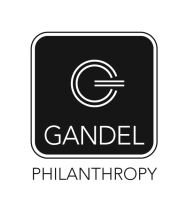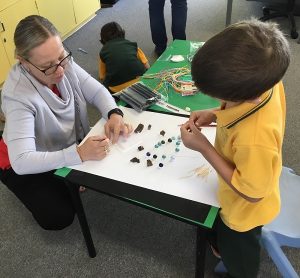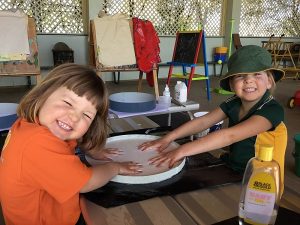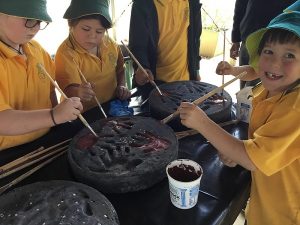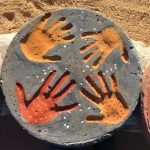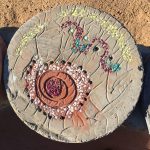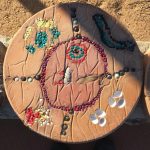Muttaburra State School recently concluded a 3 day workshop with Flying Arts Facilitator Paul Stumkat to craft seat tops for the Centre of Queensland Monument. The program aimed to finalise the seating component of the structure to reflect the community’s “past, present and future,” concluding the collaborative effort between Muttaburra State School and the community.
This component of the project was delivered by Flying Arts Alliance’s Small Schools Fund, which allows schools with 50 or fewer students in regional and remote Queensland to apply for a bursary of up to $5000 per school year for curriculum linked projects.
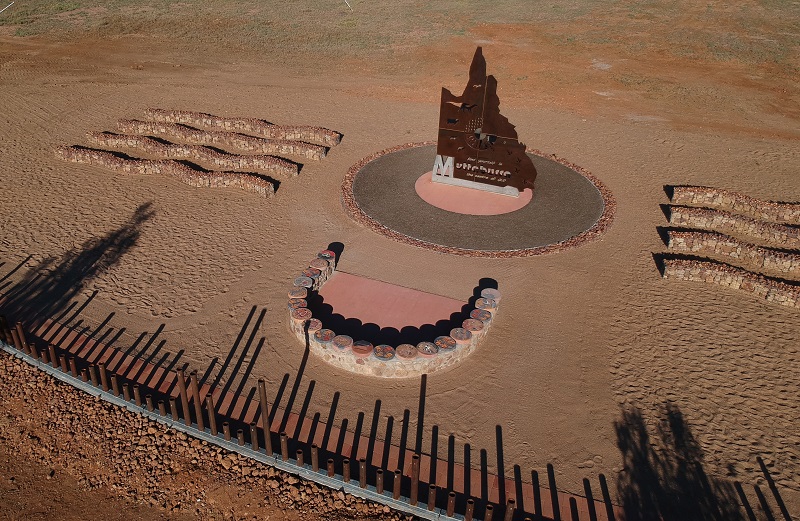
The Centre of Queensland Monument is a structure created by the local community to celebrate Muttaburra as the geographic centre of Queensland. The design incorporates Indigenous symbols around a central steel structure in the shape of Queensland. Mr Robert Turner, the Chaplain of Muttaburra State School, was instrumental in working with the Muttaburra community to bring visions of the monument to life, and with the P&C committee applied for the Small Schools Fund with the hope of incorporating local students within the final stages of construction.
Muttaburra’s Small Schools project focused on completing the seating component of the monument, a structure in the shape of an Indigenous symbol for a person sitting. Sitting places are central to story telling, so Muttaburra State School hoped to make the seat top represent the past, present and future stories. The seat top was to be constructed out of 20 concrete discs which the students would decorate.
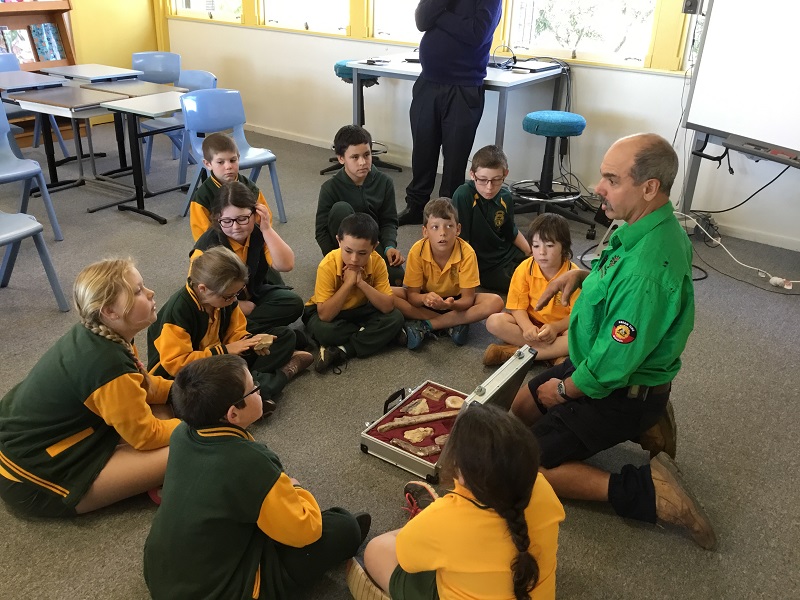
On the first day, Flying Arts Facilitator Paul Stumkat, a natural history artist, work shopped ideas with the students to develop coherent designs for the 20 seat discs. Paul led the students through a discussion of local cultural influences and symbolism, including Indigenous histories and the icon of the Muttaburrasaurus. The students then had the opportunity to create their own artworks utilising motifs from the lesson.
On the second day, students began the construction process for the cement seat tops. The designs alternated between ‘fossils’ with pressed materials (shells, coloured gravel, marbles, stones and other found objects) and positive and negative hand prints. Paul then guided the students through a session on colouring the discs with pigments.
The arts incursion concluded with students and staff stripping and cleaning the tops of the ‘fossil’ discs and preparing the artworks for installation.
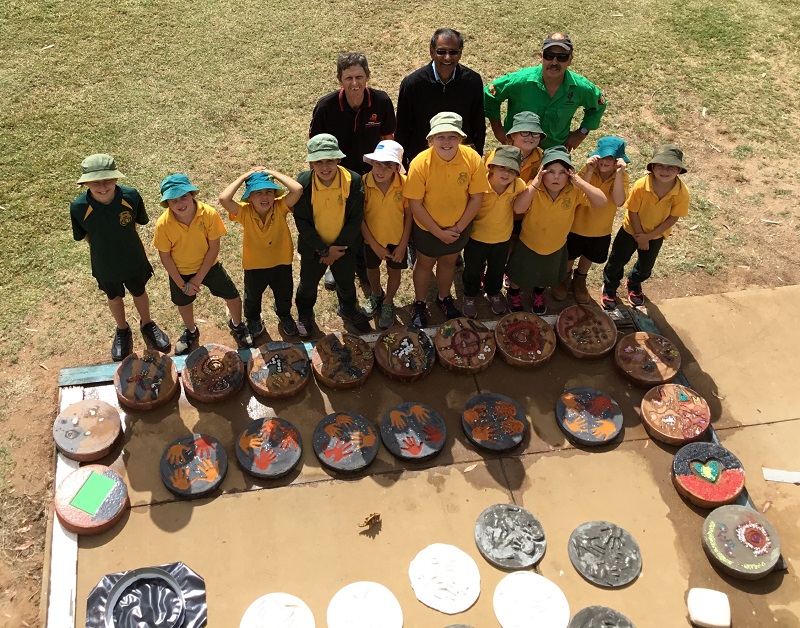
School Principal, Troy Jenkins, expressed that the program was a great success and students “wholeheartedly engaged in a journey of discovery, creativity, production and cooperation resulting in a significant and lasting legacy for themselves and the community.”
After discussing the concept of time capsules with the students, artist Paul Stumkat, said “I hope the outcomes from this workshop will last for generations. Their ideas, beliefs and designs will last though the years. They will be in a place where they will be able to come back in years to come and look into a mirror of how they were then.”
The Small Schools Fund allows schools with 50 or less students in regional and remote Queensland to apply for funds up to $5000 per school year for curriculum linked projects (inclusive of facilitator fees, travel and accommodation). This opportunity allows schools to work collaboratively with an experienced artist to plan and deliver a visual arts incursion (workshop/residency) of your selection to create an arts rich experience for students and the wider school community.
The Lesson Plan for this workshop will be available in the near future. In the meantime, view other Small Schools Funded Project lesson plans on our Educators Resource page.
 Paul Stumkat is a multi-skilled artist and paleontologist whose work transcends a variety of mediums and disciplines, from museum displays and public art to stone monuments. He has filled multiple public art commissions and participated in major museum and cultural projects. Paul was senior exhibitions officer at the Queensland Museum for 18 years and curator of paleontology in Richmond for 6 years. He is now the co-owner of a cultural tourism business in Barcaldine.
Paul Stumkat is a multi-skilled artist and paleontologist whose work transcends a variety of mediums and disciplines, from museum displays and public art to stone monuments. He has filled multiple public art commissions and participated in major museum and cultural projects. Paul was senior exhibitions officer at the Queensland Museum for 18 years and curator of paleontology in Richmond for 6 years. He is now the co-owner of a cultural tourism business in Barcaldine.
Thanks to the incredibly successful Make Art Big in Small Schools campaign, Creative Partnerships Plus 1 funding and generous support from Gandel Philanthropy, Flying Arts has been able to dedicate over $40,000 to cross curriculum arts incursions in 2019. Consider supporting Flying Arts to provide more projects like this – all donations over $2 are tax deductible.
